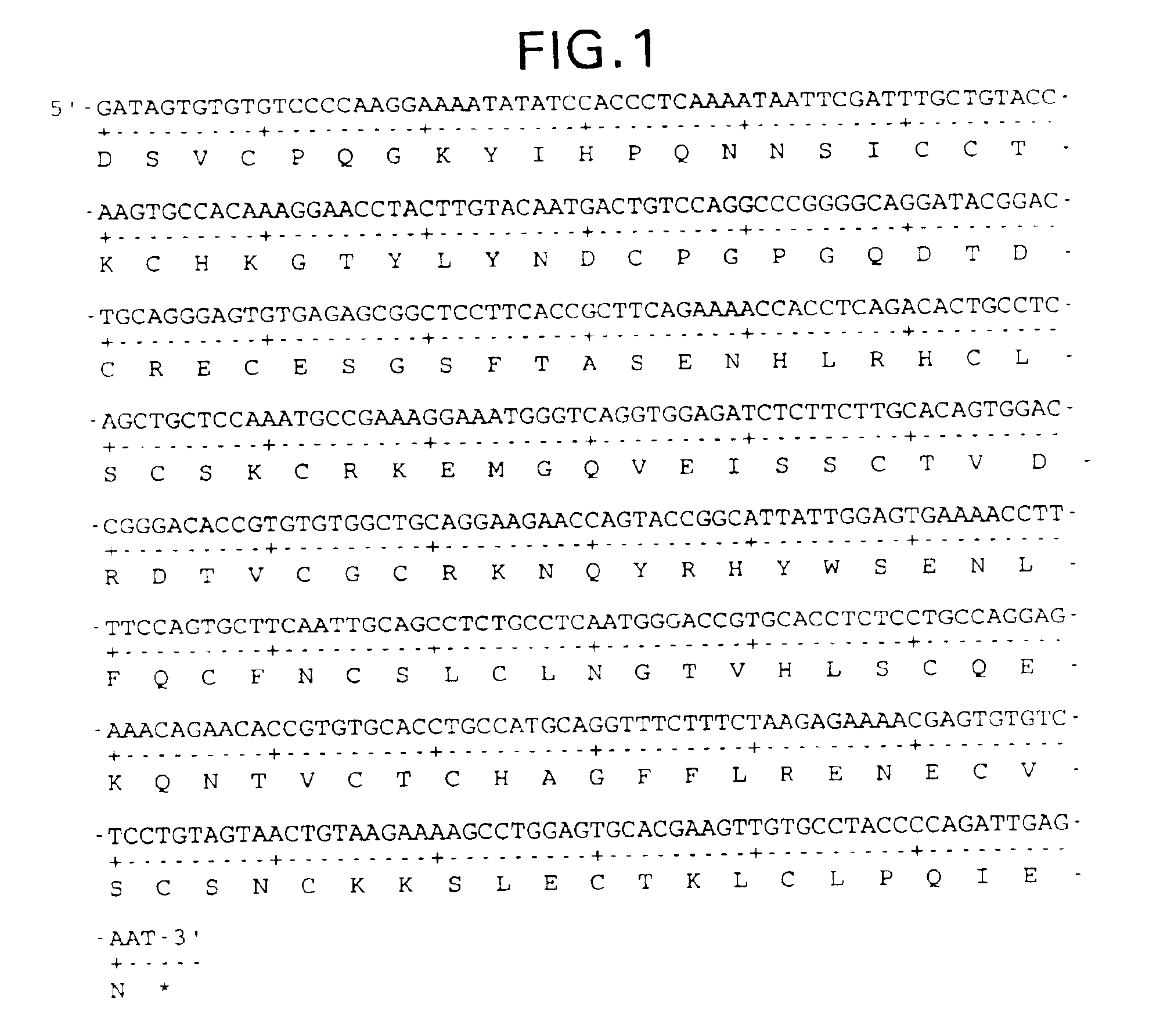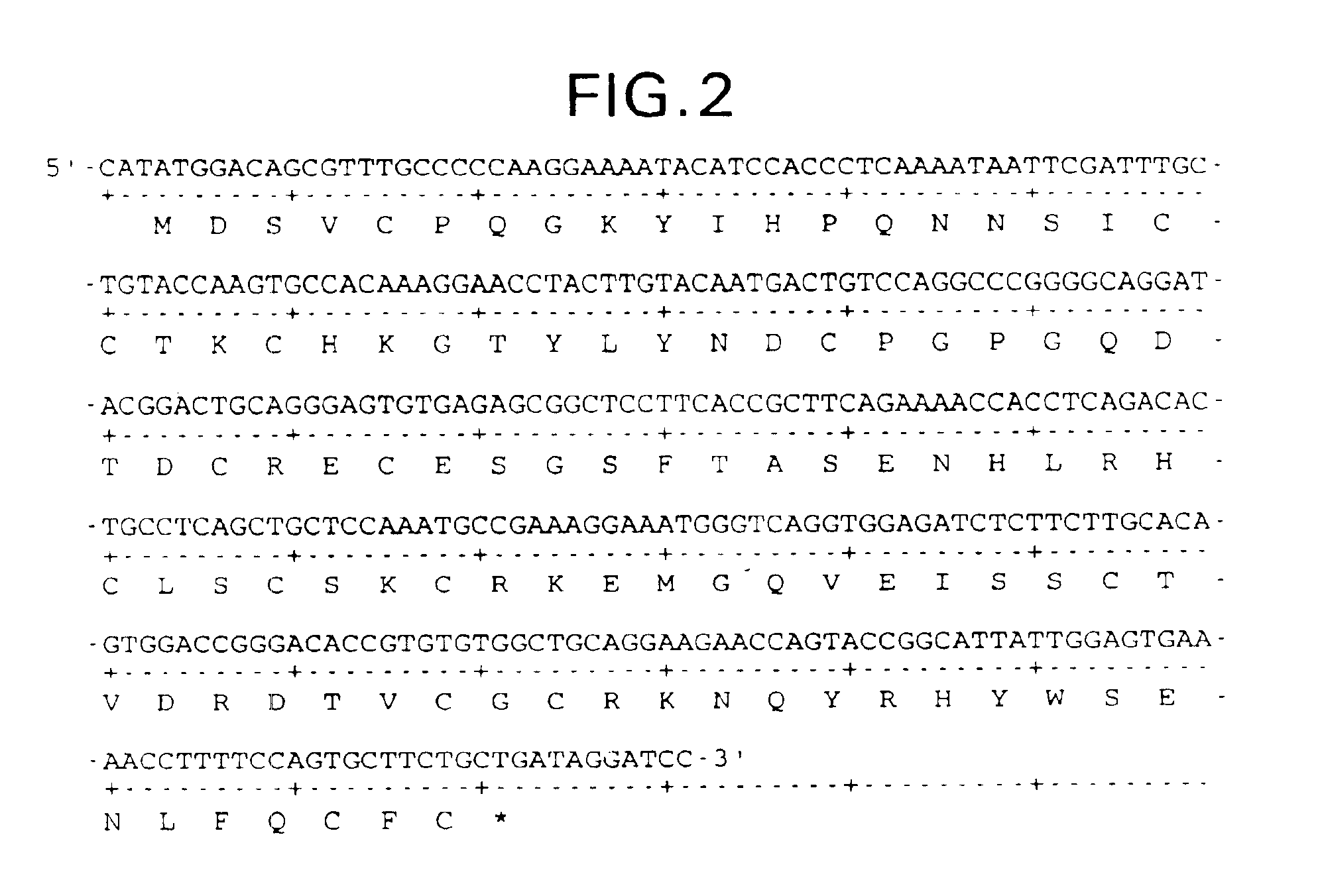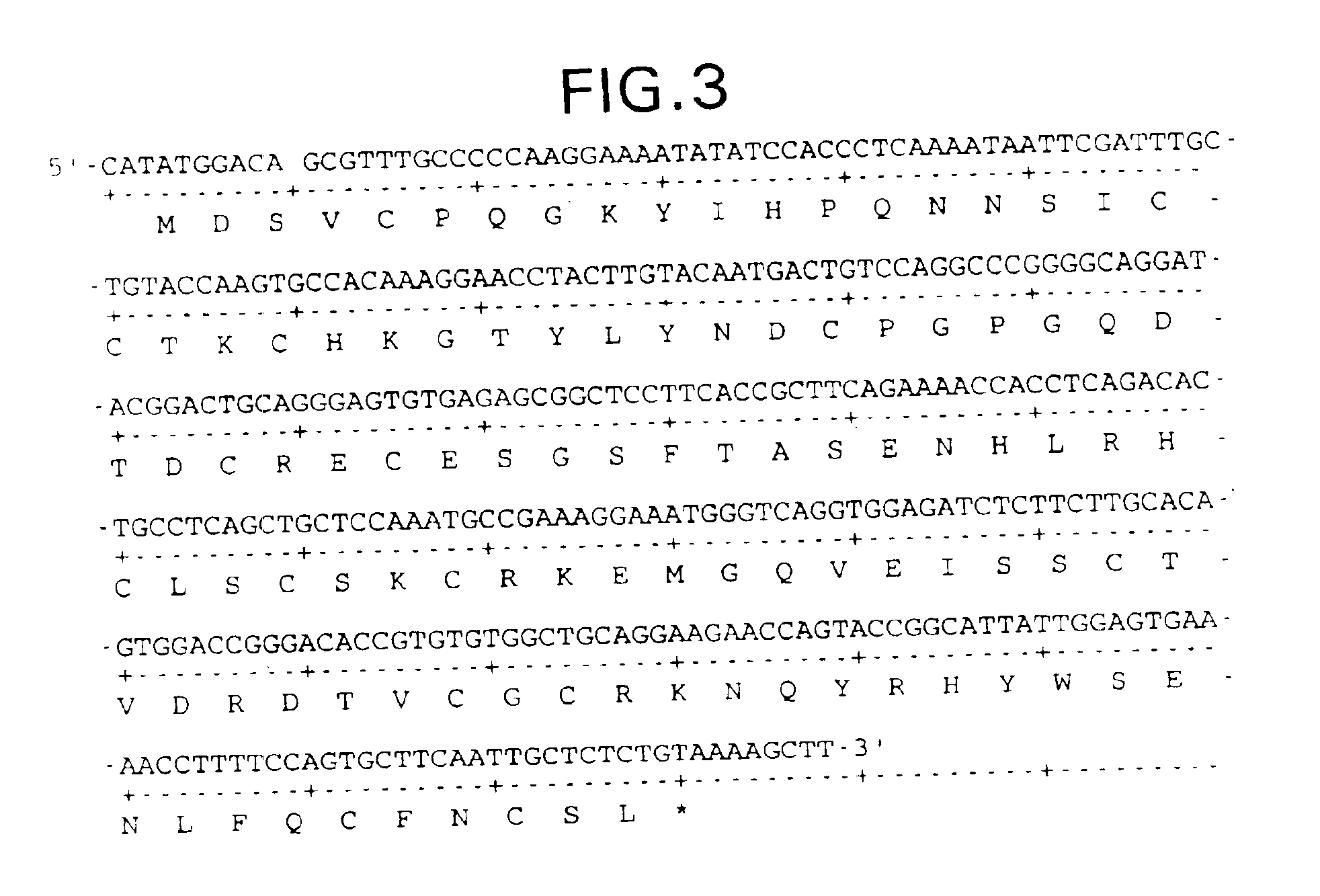Truncated soluble tumor necrosis factor type-I and type-II receptors
a tumor necrosis factor and receptor technology, applied in the field of inflammation, can solve the problems of reducing the ability of endothelial cells to secrete, unable to teach dna sequences or recombinantly-produced tnf inhibitors, and unable to achieve recombinant tnf inhibitors, so as to improve biochemical stability of purified proteins, reduce possible degradation products, and increase storage stability
- Summary
- Abstract
- Description
- Claims
- Application Information
AI Technical Summary
Benefits of technology
Problems solved by technology
Method used
Image
Examples
examples
[0234]Standard methods for many of the procedures described in the following examples, or suitable alternative procedures, are provided in widely recognized manuals of molecular biology such as, for example, Sambrook et al. (1989), supra and Ausubel et al. (1990), supra. For the reader's convenience, “mL” refers to milliliters, “L” refers to liters.
example i
[0235]The following example teaches the production of various forms of truncated, recombinant soluble TNFR-I: NH2-MDSVCPQGKYIHPQNNSIC-[Cys19-Cys103]-FC—COOH (sTNFR-I 2.6D / C105); NH2-MDSVCPQGKYIHPQNNSIC-[Cys19-Cys103]-FNCSL-COOH (sTNFR-I 2.6D / C106); NH2-MDSVCPQGKYIHPQNNSIC-[Cys19-Cys103]-FN—COOH (sTNFR-I 2.6D / N105); NH2-MYIHPQNNSIC-[Cys19-Cys103]-FNCSL-COOH (sTNFR-I 2.3D / d8); NH2-M-[Cys19-Cys103]-FNCSL-COOH (sTNFR-I 2.3D / d18) and NH2-MSIS-[Cys19-Cys103]-FNCSL-COOH (sTNFR-I 2.3D / d15).
A. Preparation of DNA
[0236]1. sTNFR-I 2.6D / C106
[0237]PCR amplification of sTNFR-I 2.6D / C106 is carried out using as a template a cloned cDNA derived from the clone lambda-gt107ctnfbp (EP 422339) and the following PCR primers:
[0238]
5′ OLIGO#1: (SEQ ID NO:68)5′-GGTTAGCCATATGGACAGCGTTTGCCCCCAA-3′3′ OLIGO#2: (SEQ ID NO:69)5′-CCCAAGCTTTTACAGAGAGCAATTGAAGCACTG-3′
[0239]OLIGO#1 and OLIGO#2 encode NdeI and HindIII and anneal to the 5′ and 3′ end of the truncated gene, respectively. PCR amplification is run for 25 ...
example ii
[0316]Various forms of truncated, recombinant soluble TNFR-I are assessed for their ability to inhibit TNF activity.
A. WEHI Cytotoxicity Assay
[0317]The WEHI assay is an in vitro cell proliferation assay (Edwards et al. (1.991), Endocrinology. 128:989-996). The cell lines are sensitive to TNF-α (i.e., TNF-α is cytotoxic). In the presence of a TNF-α inhibitor, the cells are protected from the cytotoxic effect and thus are able to proliferate.
Protocol
[0318]TNF-sensitive WEHI 164 clone 13 cells (ATCC, Rockville, Md.) are suspended at a concentration of 20×104 cells / mL in RPMI (Gibco, Grand Island, N.Y.) medium supplemented with 5% Fetal Calf Serum (Hyclone, Ogden, Utah) and penicillin 50U / mL:streptomycin 50 mg / mL. One hundred microliters of this cell suspension are placed in each well of flat-bottomed 96-cell microtiter plates, and the cells are allowed to adhere for 4-6 hours at 37° C. in 5% CO2. To each well 10 μL of a 0.0060 mg / mL actinomycin-D (Sigma Chemical Co., St. Louis, Mo.) is...
PUM
| Property | Measurement | Unit |
|---|---|---|
| molecular weight | aaaaa | aaaaa |
| molecular weight | aaaaa | aaaaa |
| molecular weight | aaaaa | aaaaa |
Abstract
Description
Claims
Application Information
 Login to View More
Login to View More - R&D
- Intellectual Property
- Life Sciences
- Materials
- Tech Scout
- Unparalleled Data Quality
- Higher Quality Content
- 60% Fewer Hallucinations
Browse by: Latest US Patents, China's latest patents, Technical Efficacy Thesaurus, Application Domain, Technology Topic, Popular Technical Reports.
© 2025 PatSnap. All rights reserved.Legal|Privacy policy|Modern Slavery Act Transparency Statement|Sitemap|About US| Contact US: help@patsnap.com



